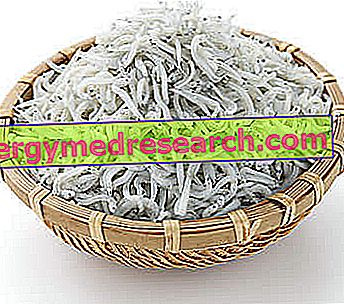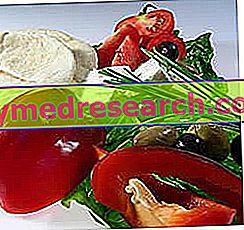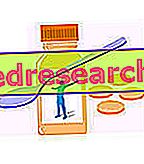What are whitebait?
The bianchetti (dialectally known as gianchetti, newborn, hundred bocconi, nuccu etc.) are tiny transparent or milk-colored little fishes.
Fished and used for food purposes, the bianchetti are biologically considered to be fish juveniles ( fry ); It is NOT therefore fish that remain small.

"Bianchetto" is NOT synonymous with " lattarino " (acquadella); this creature, which remains very small even in adult form, becomes however 5-6 times larger than the whitebait.
The fish species that make up the whitebait have the characteristic of spending the entire neonatal phase on the coastal coast, where they remain organized in very dense schools until the end of the development necessary to undertake the journey to the open sea.
The composition of the whitebait is usually predominantly based on blue fish, such as anchovies and sardines; less frequently, although this depends very much on the area in question, different species are included, such as lattarini, paganelli and cicerelli (more abundant in the upper Adriatic Sea, especially in the valleys and lagoons).
"Bianchetto" is often used as a synonym for " lipstick "; in truth, the latter is properly constituted by the species Aphia minuta and takes on a pinkish color.
For sustainability reasons, whitebait fishing is (fortunately) strictly prohibited to date.
The whitebait is pale, milky in color, and the tiny black dots of the eyes are barely distinguishable. They are sold in agglomerated form, as if they were a single food; in reality, in the standard portion of raw whitebait (around 100-150 g) there are around one hundred or two hundred specimens.
Nutrition
Nutritional characteristics of the whitebait
The whitebait is a fishery product, therefore it belongs to the fundamental group of foods. From a nutritional point of view, they are primary sources of: specific proteins, fats, vitamins and minerals.
The whitebaits have a medium caloric intake, which changes according to the prevailing species; it can be assumed that 100 grams of raw whitebait provide 100-150 kcal / 100 g. However, we must not forget that these fish are mainly consumed fried, a method that drastically increases the lipid and energy content of the recipe.
The whitebait calories are mainly supplied by the proteins, which are of high biological value (rich in essential amino acids), and by fatty acids, mainly of polyunsaturated nature (in particular, the blue-fish whitebait are rich in omega 3).
It is reasonable to think that in the whitebait we abound cholesterol; the fibers are absent.
Still theoretically, the whitebait should contain excellent amounts of many vitamins, such as: vitamin A, vitamin D and many B vitamins (B1, B2, PP, B12 etc.). The same applies to minerals, among which the concentrations of: calcium, phosphorus, iron and iodine should be relevant.
The whitebait, intended as an ingredient, have no noteworthy dietary contraindications for healthy subjects. On the other hand, they should be avoided in case of hyperuricemia, especially in those affected by gout attacks. Fried do not lend themselves to the diet for overweight and metabolic diseases in general.
They do not contain lactose or gluten, but they are not recommended for use by people suffering from food allergies towards one or more fishery products.
They are not granted by vegetarian and vegan philosophies.
The average portion of raw or boiled whitebait could be 150 grams; that of fried whitebait should not exceed 100 g.
Kitchen
How do you use whitebait in the kitchen?
Those of the bianchetti are recipes of the highest gastronomic merit, so much so that in many places it is still possible to find them in commercial establishments, for example in rural fish markets (street vendors) or in restaurants, despite the ministerial prohibition entered into force by the year 2006. Obviously, as for other products subject to the prohibition or restriction of fishing (such as sea date), consumers are advised to avoid consumption by discouraging poaching.
In Italy the whitebaits are eaten only after cooking; in France raw consumption is also widespread, with the addition of oil and lemon. The most widespread method is the frying of small fish well separated from each other, appropriately floured and dipped in extra virgin olive oil.
Alternatively, crushed meatballs can be made by adding a whole egg of chicken, parsley and possibly a little flour.
The whitebait omelette also exists.
The variant of the whitebait is less common.
In the past, the whitebait was inserted in a particular mixed fry, composed only of valuable products such as: crab molecules, canadian molecules, small sea eels, shrimps etc.
In Nice there is a variation of the typical sauce called "pissalat" (peis salat - salted fish) with pickled whitebait.
Hygiene
Hygienic aspects of the whitebait
The whitebaits can have very important negative hygienic implications. Let's look at them in more detail.
- First of all, the whitebait should be consumed only fresh. They are very delicate and do not tolerate the reduction of temperature; let alone traditional freezing. This aspect significantly increases the risk of poor preservation and foodborne pathologies.
- The whitebait should NOT be rinsed in fresh water; the only cleaning that can be applied is carried out directly at sea, during fishing. Much of the characteristic flavor of this food lies in the sea water that surrounds them and in all its natural elements. Moreover, by rinsing the whitebait we should then dry them, risking to smash them, or leave them for a long time in a colander (time during which the freshness would continue to decrease). If too moist, the whitebaits collect too much dust in the smattering and the result of frying is mediocre to say the least. The omelette would fall apart. If eaten raw, they would leave unpleasant liquid in the bottom of the dish.
- The whitebaits are prohibited. This means that the only sources of supply are not traceable and safe. We recall that these small fish abound in the inlets of river mouths, in the valleys and in the lagoons. Needless to say that these places are also rich in port areas, polluted and absolutely to be avoided.



